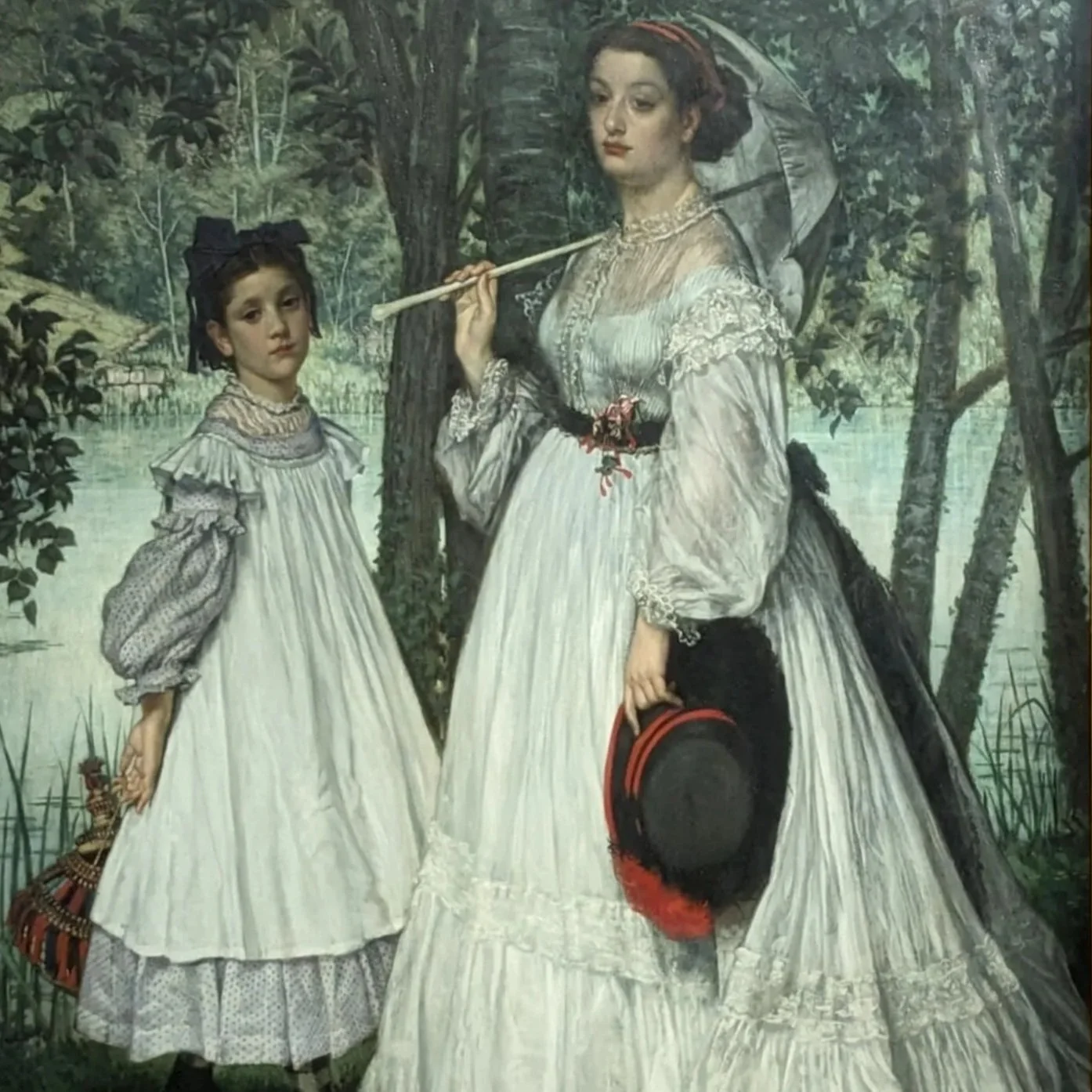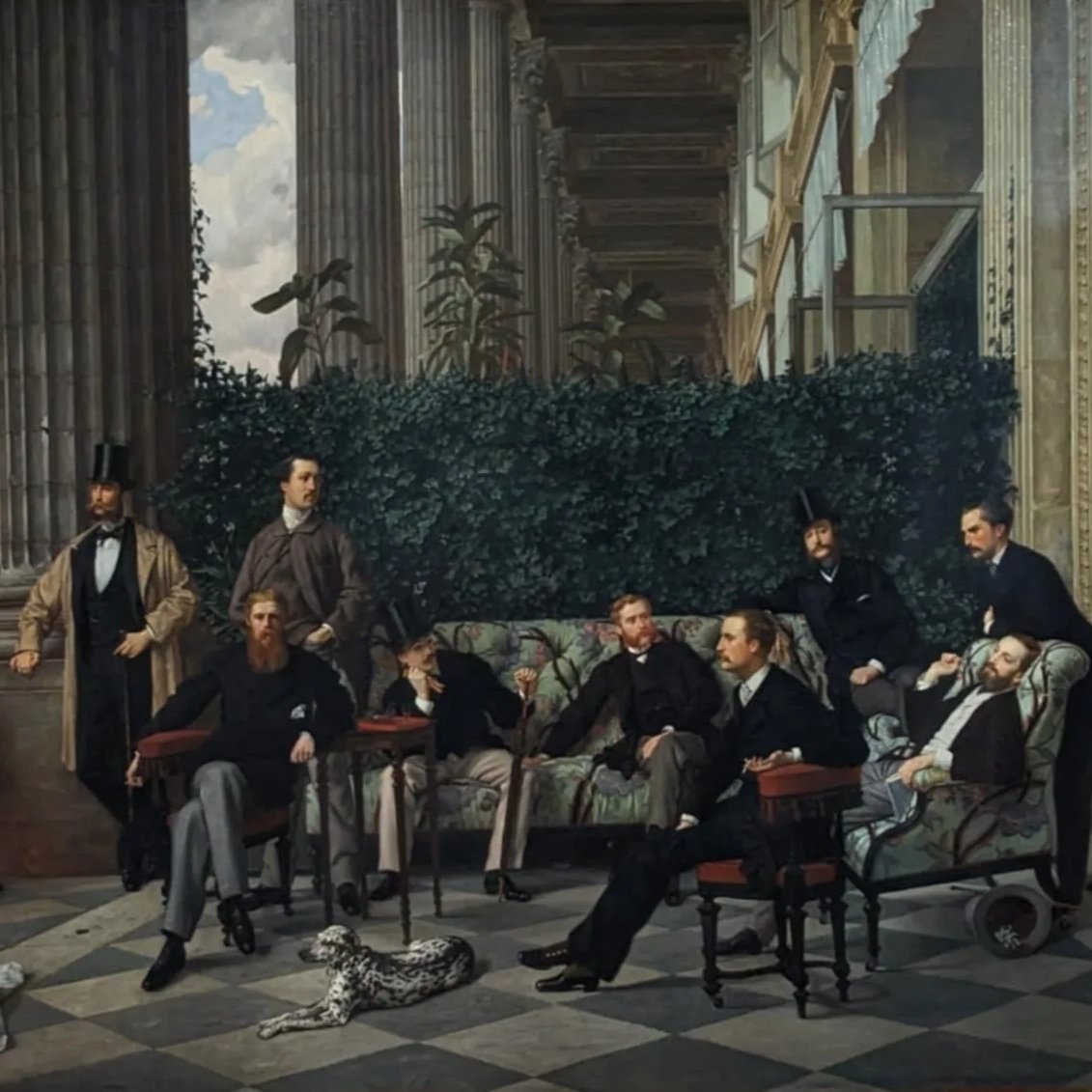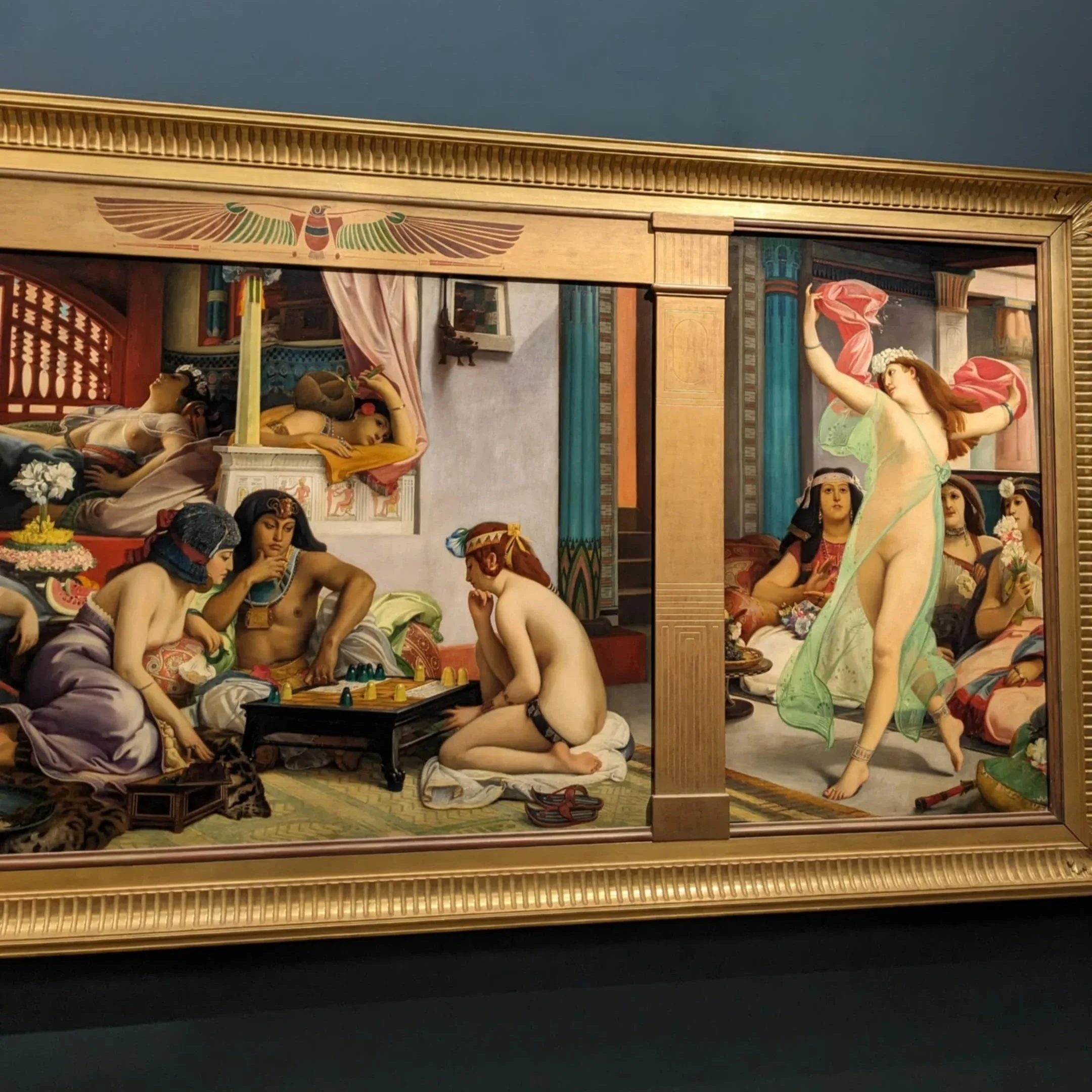Evil Twins
When I visited the D’Orsay Museum in Paris in the summer of 2024, a stunning contrast stroke me as I was walking around the rooms full of gorgeous art. One room seemed like a mirror of how the European painters were seeing themselves and their own culture. The men were immaculately dressed, pondering with their peers under the classical columns evoking ancient Greece and Rome, serving Philosopher Kings. The women were perfectly demure and modest, with flowy silky dresses, serving Mother.
And then I entered the Orientalism room across the hall, devoted to art representing the Middle East and North Africa. This was not just a parallel Universe, but an inverted one! Men here were serving Despots — riding shirtless on camels through the dessert, cruelly slashing the heads of their enemies, blood gushing everywhere. Women danced seductively for the polygamous Despots, hanging out naked in the harems, serving Whores.
My first thought was of Edward Said’s book Orientalism, which talks about how art in the West has, as the images suggest, quite literally painted a certain picture — Europe as civilized and the Middle East as barbaric. Such narratives not only serve to inflate the ego, but also to justify political interventions in these countries. To bring them civilization, democracy, save their women, and so on. A picture is worth a thousand words, and that day felt like I had read Orientalism.
My second thought was — what a bad fucking propaganda! I see these paintings, and I think I’d much rather be with the despots and whores! The European world looks so boring. Everyone looks disengaged, sickly pale, depressed at worst and annoyed at best. The Arabs are having a time — it’s a party! Even the beheading, once the shock is gone, I cannot but be enthralled with. Just look at the flowy volume on the caftan, the pulsing veins on the perfectly muscular arm, and the psychedelic Islamic geometry in the background. It unites both masculine and feminine symbols of power: power as strength and power as glamour. I left D’Orsay that day with less anger about the political parallels of Orientalist art, and with more pity for the sad civilized people on the European paintings.
Almost a year later, I read Franz Fanon’s Black Skin, White Masks for a class I was a teaching assistant for. The root of the issues explored in Black Skin, White Masks may be summarized as:
“White civilization and European culture have forced an existential deviation on the Negro…what is often called the black soul is a white man’s artefact.” (p.6)
Black identity, in my reading of Fanon, is not an independent identity, allowed to manifest itself in its own right…it is an dependent and oppositional identity. Black people are everything that white people are not, their non-whiteness is a negation by definition. This inability to define oneself is a fundamental robbing of humanity, and likely what leads Fanon to proclaim that “the black is not a man” (p. 1).
This presents Black people with a binary choice of identity, a coin with two sides: a good side and a bad side. The “good” side is to “become white“:
“The educated Negro, slave of the spontaneous and cosmic Negro myth, feels at a given stage that his race no longer understands him. Or that he no longer understands it. Then, he congratulates himself on this, and enlarging the difference, the incomprehension, the disharmony, he finds in them the meaning of his real humanity” (p. 7)
The “bad” side option is to “stay Black“:
“Or more rarely, he wants to belong to his people. And it is with rage in his mouth and abandon in his heart that he buries himself in the vast black abyss…this attitude, so heroically absolute, renounces the present and the future, in the name of the past” (p. 7)
Fanon immediately took me back to D’Orsay. Aren’t these oppositional identities, these two sides of the same coin, exactly the aesthetic experience I had in D’Orsay. Both Arabs and Black people are construed by the dominant groups in their world as what I would call An Evil Twin. When I started thinking about the Evil Twins, I realized they are everywhere!
Women are the Evil Twin of men. They are everything that men are not, for better or worse, but usually worse. They do not have an autonomous agency to self-determination. They stem from men — Eve is made of Adam’s rib in the Bible. Aristotle called women “misbegotten men“. In The Second Sex, Simone de Beauvoir says: “He is the Subject, he is the Absolute—she is the Other.” (p. 6). I read de Beauvoir analogous to Fanon: women, just like Black people, are defined in opposition to, as a negation, and are therefore constrained in their self-expression and ability to define themselves. They are somebody else’s Object, and not a Subject in their own right.
We can even go beyond interpersonal dynamics. Evil Twins exist in international relations: in the Global North and Global South, or the First World and Third World, the West and the East, Occident and Orient… all are Good Twin/Evil Twin dualities. Once we zoom in they replicate themselves. In the USA, the south is the Evil Twin of the north, but in the UK, the north is the Evil Twin of the south. In the Balkans they say sto juznije, to tuznije, or “the more south the sadder”, something that Slavoj Zizek comically explains in this video. Even cities have Evil Twins! What is Oakland to San Francisco, or Jersey City to NYC, or Camden to Philly, if not an Evil Twin city?
“How do we extricate ourselves?“, asks Fanon. Before we get there I want to ask — why are we like this to begin with? I think that maybe on some level we’re just bi-lateral beings, symmetric in the middle and making sense of the world through binaries. We are left-right beings. Right means right in English, lev (left) means crazy in Macedonian, “sinister” comes from the Lation word for left... examples abound. Left-handed people have gone through some issues on their own, from “conversion camps“ to being associated with the Devil during the Middle Ages. Left is Right’s Evil Twin. What I’m saying is — we like binaries and have a harder time thinking continuously. Evil Twin narratives are likely due to some combination of embodied cognition and our proclivity to flatter ourselves and demonize others who are different from us.
There may be another reason, one that makes the Evil Twin narratives perniciously hard to shake off. It seems to me that what often — though not always — happens is that the characteristics projected onto the Evil Twin are those which have been repressed in the Good Twin. If we bring Jungian psychoanalysis into this, we may say that a person identifies with the Hero archetype and represses the Shadow archetype, and then projects their own Shadow onto another group in society.
Balkan cinema betrays this pretty well. There are one too many films that depict Roma people exactly like the Arabs in the D’Orsay paintings: as something both brutal and uncivilized yet free and happy in its Chaos, envied for its embodied life with lots of sex, music, and dance. Movies like Emir Kosturica’s Crna mačka, beli mačor (1998) and Dom za Veshanje (1988), or Stole Popov’s Dae (1979) and Gypsy Magic (1997), are titles that come to mind that exemplify this. Roma life in these movies is something both repudiated and desired. Something that tells you: you cannot have that much freedom and fun, happiness and sex, because then you have to live like the Roma. The Balkans repress the Roma within, to then oppress the Roma without.
So it is with other Evil Twins. Men repress the woman within, to then oppress the woman without. The Europeans repress the Arab within, to then oppress the Arab without. The white men repress the black man within, to then oppress the black man without. I wonder — if people repress more within do they seek to oppress without?
Projecting the Jungian Shadow makes it harder for the Evil Twins to claim autonomy over their own self-determination. The projections of repressed desires always poses a risk of inverting, instead of subverting, the Good Twin/Evil Twin duality. I’m thinking of the Noble Savage trope, one that romanticizes (often to a point of exotification) a desired Other, while repudiating an undesired Self. I’m thinking of An Indigenous Peoples' History of the United States by Roxanne Dunbar-Ortiz, which does precisely this inversion. In this book, Native Americans are recast as the Good Twin — peaceful, egalitarian, in harmony with nature — and the colonizing Europeans are recast as the Evil Twin — genocidal, hierarchical, destroyers of nature. This to me seems like an equally unnuanced, albeit a less pernicious narrative given the existing power structures. It just flips the coin, heads to tails.
Inversion can only be a first step. I think the second is to see the duality not as opposing and absolute, but as co-dependent and enmeshed. A balancing act needs to happen. One domain for such a balancing act is in narratives. A re-definition of what the Good Twins are and what the Evil Twins are. The lines need to blur and the categories need to blend. Like in the yin-yang, we need to see the black in the white and the white in the black. We need to marry the Hero and the Shadow, the Mother and the Whore, the Philosopher King and the Despot.
Yes, narratives certainly matter. But narratives are also driven by materialistic conditions and power. The Good Twin is the richer and more powerful one of the two. The existential question of identity is underpinned by material structures of power. Fanon claims that
“There will be an authentic disalienation only to the degree to which things, in the most materialistic meaning of the word, will have been restored to their proper places” (p. 5).
No one will allow the Evil Twins to take control over their lives and stories, no one will grant them authentic disalienation from their true Self. Power is not given, power is taken. Things need to be restored to their proper places, in the most materialistic meaning of the word.









